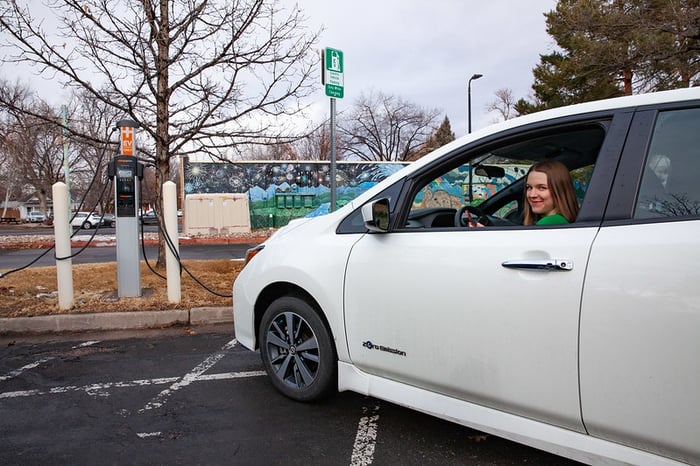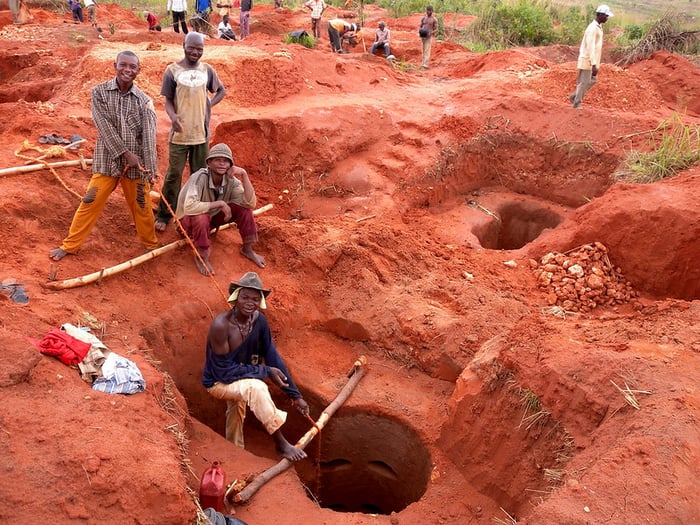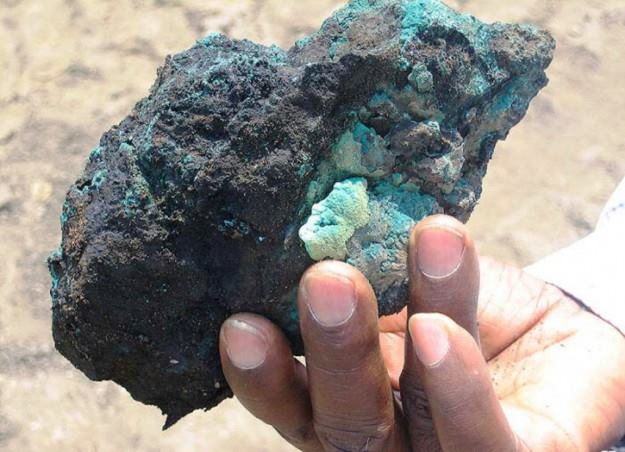Electric vehicles help air quality, but what about artisanal miners and ecosystems?

Fast fashion is often singled out as an industry with a troublesome supply chain, but it's not alone. As a result of cobalt mining, our electronics and electric vehicles are riddled with humanitarian issues including child labor, inhumane conditions, and hazardous chemical contact for artisanal miners.
The major source of cobalt mining is in the Democratic Republic of Congo. The country is endowed with incredible natural mineral resources, which makes it a target for corporate entities. According to Statista.com, as of 2022, the Democratic Republic of Congo (DRC) has the largest cobalt reserves in the world, at roughly four million metric tons. Australia comes in second with approximately 1.5 million.
Unfortunately, cobalt mining in DRC is largely unregulated, and that's a problem.
 (Photo from Flickr)
(Photo from Flickr)
DRC may be rich in resources, but the population is devastatingly poor. The country's poverty levels are among the world's highest, which makes their people ripe for exploitation in the form of dirt-cheap labor for fast money.
The poor in DRC is at the bottom of the supply chain. They are the hidden faces and dispensable commodities doing the grunt work associated with the compulsory consumption of cell phones and the growing EV revolution. A cell phone typically has about 8 grams of cobalt, but the number increases exponentially with electric vehicles—sometimes using up to 20 kilograms.
 Photo: Raw cobalt copper ore, Minerals & Gemstone Archives | Mijo Agro & Mining Limite
Photo: Raw cobalt copper ore, Minerals & Gemstone Archives | Mijo Agro & Mining Limite
Some companies have pledged to source their products only from those who can trace the supply to regulated mines with proper safety precautions. Nonetheless, it is estimated that 25,000 children are still working at these dangerous industrial, artisanal, or small mining operations.
The mining is often a family affair. Mothers have their children--even their toddlers in tow—as they make their way to unregulated industrial mines. Some dig with crude instruments or by hand in the surrounding industrial mine areas, risking their lives for wages often totaling less than a dollar a day.
The whole situation is complicated because the jobs are needed. No matter how small the pay, it may be the difference between eating or going hungry.
Unfortunately, without education, job opportunities, or finances, this is the reality for many in DRC.
Less sustainability isn't the answer. Environmental stewardship via reducing greenhouse gases is needful. Nonetheless, when human lives and welfare are at stake—particularly children's—those stakes are too high. Major manufacturers are aware of the supply chain issues. However, with so little transparency from suppliers, the culpability of manufacturers is indirect.
As consumption increases, there are strides to move away from using cobalt in EV batteries. Regardless, disparities still remain whether it is mining for copper, lithium or cobalt, which are used in batteries, or minerals like mica, used in most cosmetics.
Perhaps it is time to look at environmental issues from a more prismatic perspective because the ongoing humanitarian costs demand deeper introspection and nuanced approaches—not fast fixes.
Mineral over-consumption not only hurts people but also harms the environment, with contaminating effects on waterways, soil, air, and biodiversity. A dig first and figure it out later approach is not suitable for a civilized society interested in the health, prosperity, and welfare of its people and the planet.
